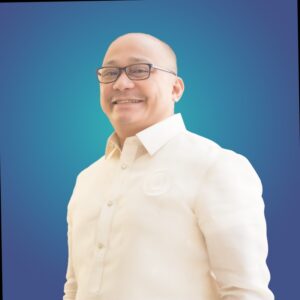Introduction
In our last medical association’s meeting, a colleague asked about how are we progressing on cultivating a culture of continuous learning in our specialty’s training institution. He expressed concerns about rumors the current generations of would be doctors (his son was one of these MDs) seem to have a different notion of continuous learning and work habits despite the availability of huge amount of medical information. He added that most physicians in practice now, would jump at opportunities for continuous learning. As a student practitioner of distant education, this got me rethinking- yes how are we progressing in this area?
In the dynamic field of healthcare, continuous education is paramount. For Filipino medical professionals, fostering a culture of lifelong learning is essential to stay abreast of medical advancements and to provide the highest quality of patient care. This pre #Healthxph chat blog post delves into the significance of continuous learning, the challenges faced within Philippine medical institutions, and strategic approaches to cultivate an environment that promotes ongoing professional development.
I. The Importance of Continuous Learning in Healthcare
Continuous learning in healthcare ensures that medical professionals remain updated with the latest clinical practices, technologies, and research findings. This ongoing education is crucial for:
- Enhancing Patient Care: Up-to-date knowledge leads to improved diagnostic accuracy and treatment efficacy.
- Professional Competency: Regular training helps maintain and elevate clinical skills.
- Adaptability: Healthcare is ever-evolving; continuous learning enables professionals to adapt to new protocols and technologies.
II. Challenges to Continuous Education in the Philippines
Despite its importance, several barriers hinder the implementation of continuous learning in Philippine medical institutions:
- Resource Limitations: Many institutions lack access to updated educational materials and training programs.
- Time Constraints: Heavy workloads often leave little time for additional learning.
- Financial Barriers: The costs associated with courses and seminars can be prohibitive.
- Technological Challenges: Inadequate infrastructure for online learning, especially in remote areas, limits access to educational resources.
III. Strategies to Foster a Learning Culture
To overcome these challenges, institutions can implement the following strategies:
A. Leadership and Institutional Support
- Prioritize Education: Leadership should emphasize the importance of continuous learning.
- Allocate Resources: Budgeting for educational initiatives demonstrates commitment.(optumhealtheducation.com)
B. Leveraging Technology for Education
- Online Platforms: Utilize webinars and e-learning modules to provide flexible learning opportunities.
- Mobile Applications: Implement apps that offer accessible learning materials.
C. Mentorship and Peer Learning
- Mentorship Programs: Pair experienced staff with junior members to facilitate knowledge transfer.
- Collaborative Learning: Encourage case discussions and journal clubs to promote shared learning experiences.
D. Incentivizing Continuous Education
- Recognition and Certifications: Acknowledge achievements to motivate staff.
- Financial Assistance: Provide subsidies or financial support for courses and seminars.
IV. Case Studies and Success Stories
A. Emerging Clinical Nursing Education Series (ECNES)
The ECNES is a program designed to enhance the quality of clinical nursing education in the Philippines. It offers targeted seminars delivered by Filipino nursing educators, equipping nurses with essential practical skills and competencies.(findnetwork.org)
B. Optum Health Education Global (OHEG)
OHEG provides free, self-paced continuing education courses to Filipino nurses. These courses are internationally and locally accredited, supporting nurses in maintaining active licenses and advancing their careers.(Inquirer Business)
C. University of the Philippines College of Nursing (UPCN)
UPCN has been redesignated as a World Health Organization Collaborating Center for Leadership in Nursing Development. This designation underscores its role in providing leadership in nursing education and development programs.(Facebook)
V. Actionable Steps for Medical Institutions
- Conduct Needs Assessments: Identify specific educational gaps among staff.
- Develop Structured Learning Plans: Create programs tailored to address identified needs.
- Implement Flexible Learning Options: Offer both in-person and online courses to accommodate varying schedules.
- Establish Evaluation Metrics: Regularly assess the effectiveness of educational initiatives.
- Foster a Supportive Environment: Encourage open communication and feedback regarding learning opportunities.
VI. Discussion Questions
I hope to read your thoughts on fostering a learning culture at the #HealthXPh chat this Saturday, May 31, 2025 9PM Manila time.
These are our guide questions:
- T1. How can institutions effectively integrate technology to enhance continuous learning among healthcare professionals?
- T2. What role does mentorship play in fostering a culture of continuous education, and how can it be effectively implemented in our institutions?
- T3. In what ways can we address the financial and time constraints that hinder healthcare professionals from pursuing ongoing education?
Conclusion
Cultivating a culture of continuous learning within Philippine medical institutions is vital for the advancement of healthcare professionals and the improvement of patient care. By recognizing challenges and implementing strategic solutions, institutions can create an environment that encourages lifelong learning and professional development.
FAQs
1. What is a learning culture in medical institutions?
A learning culture in medical institutions refers to an environment that encourages and supports continuous education, skill development, and knowledge sharing among healthcare professionals.
2. Why is continuous education important for healthcare professionals?
Continuous education ensures that healthcare professionals stay updated with the latest medical advancements, leading to improved patient care and professional growth.
3. How can technology facilitate continuous learning in healthcare?
Technology enables flexible learning through online courses, webinars, and mobile applications, making education more accessible and convenient for healthcare workers.
4. What role does leadership play in fostering a learning culture?
Leadership sets the tone by prioritizing education, allocating resources, and modeling the importance of continuous learning within the institution.
5. Are there successful examples of continuous learning programs in the Philippines?
Yes, programs like the Emerging Clinical Nursing Education Series (ECNES) and platforms like Optum Health Education Global (OHEG) have successfully promoted continuous learning among Filipino healthcare professionals.








